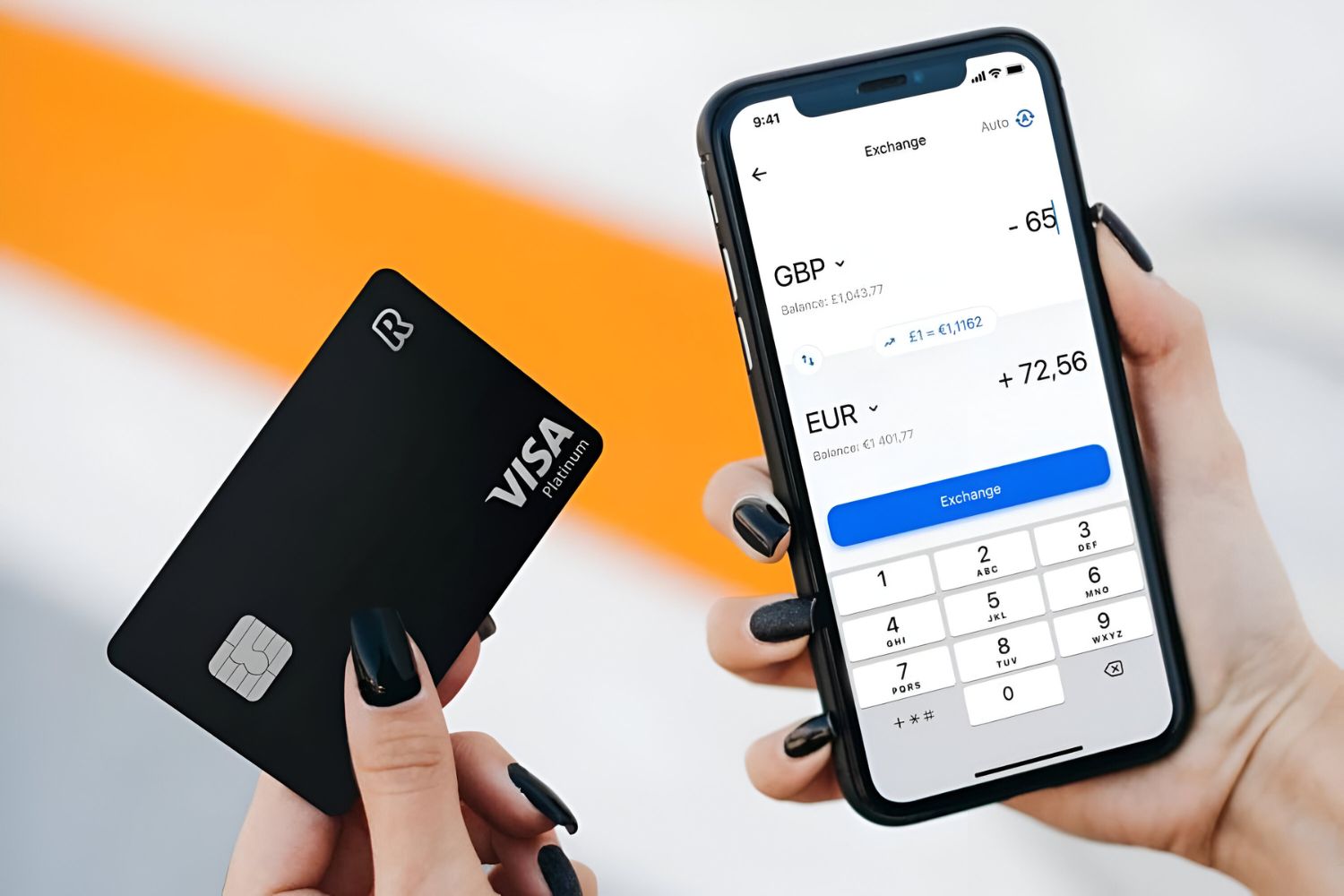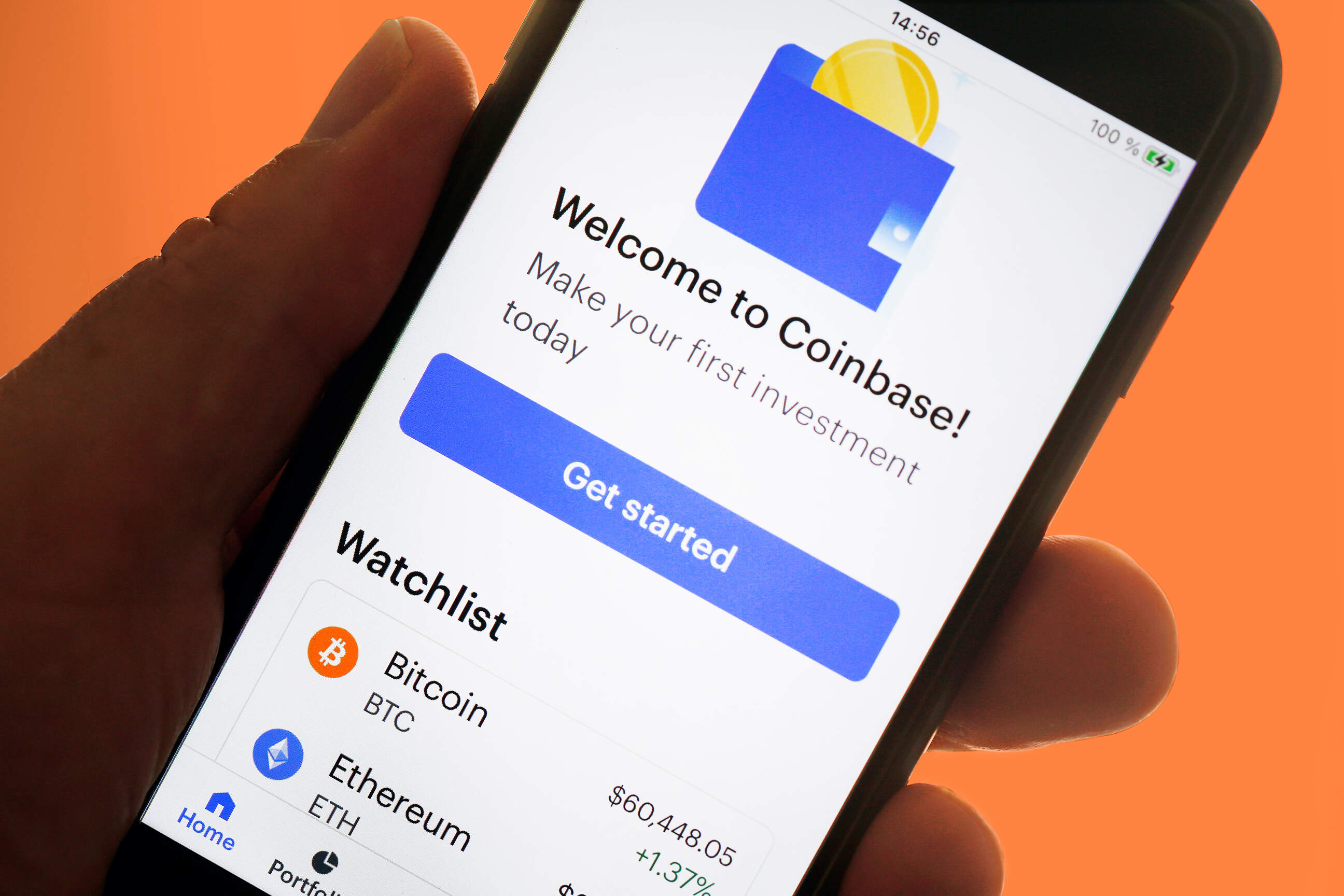Introduction
Transferring money from a cryptocurrency account to a traditional bank account may seem like a daunting task to those who are unfamiliar with the process. However, with the rise in popularity of cryptocurrencies and the advancements in financial technology, this once complex procedure has become much simpler and more accessible.
Whether you’re looking to cash out your crypto investments or simply need to transfer funds from your crypto wallet to your bank account, understanding the steps involved can help streamline the process and ensure a smooth transaction.
In this article, we will guide you through the process of transferring money from your crypto account to your bank account. We will cover essential topics such as setting up a crypto wallet, choosing the right exchange platform, verifying your account, linking your bank account, initiating a transfer, confirming the transfer, and checking your bank account for the funds.
While the exact steps may vary depending on the platform you use and the specific cryptocurrency involved, the general process can be followed for most transfers. With a little know-how and careful attention to detail, you’ll be able to successfully navigate the world of crypto-to-bank transactions.
It’s important to note that transferring money from a cryptocurrency account to a bank account involves a series of transactions, which include converting crypto assets into fiat currency. As such, it’s essential to understand the fees, conversion rates, and any potential risks associated with the transfer process.
Now, let’s dive into the fascinating world of crypto-to-bank transfers and explore the steps required to move your digital assets into the traditional banking system.
Understanding Crypto and Bank Transactions
Before diving into the process of transferring money from a crypto account to a bank account, it’s important to have a basic understanding of both cryptocurrencies and traditional banking transactions.
Cryptocurrencies, such as Bitcoin, Ethereum, and Litecoin, are digital or virtual currencies that use cryptography for secure financial transactions. Unlike traditional currencies issued by governments, cryptocurrencies operate on decentralized networks known as blockchain. The blockchain technology ensures transparency, security, and immutability of transactions.
On the other hand, traditional bank transactions involve the transfer of funds between individuals or businesses through established financial institutions, such as banks or payment processors. These transactions typically involve fiat currency, which is the legal tender issued by a government, such as the US dollar or Euro.
When it comes to transferring money from a crypto account to a bank account, several steps need to be taken. First, the cryptocurrencies need to be converted into fiat currency. This conversion is necessary as most traditional banks do not accept direct deposits in cryptocurrencies.
Various exchanges and platforms allow users to convert their cryptocurrencies into fiat currency. These platforms act as intermediaries, facilitating the conversion process and enabling the transfer of funds to a bank account.
It’s important to note that the process of converting cryptocurrencies to fiat currency involves fees. These fees can vary depending on the exchange platform, the amount being transferred, and the type of cryptocurrency. Additionally, conversion rates can also impact the final amount received in the bank account. Therefore, it’s crucial to carefully consider these factors before initiating the transfer.
To ensure the legality and compliance with financial regulations, most reputable cryptocurrency exchanges require users to complete a verification process. This process involves providing personal identification and proof of address documents to establish the user’s identity and prevent fraudulent activities.
In the next sections, we will explore the steps involved in setting up a crypto wallet, choosing an exchange platform, verifying your account, linking your bank account, initiating a transfer, confirming the transfer, and checking your bank account for the arrival of funds.
Now that we have an understanding of the basics of cryptocurrencies and traditional bank transactions, let’s proceed with the necessary preparations to enable a smooth transfer from your crypto account to your bank account.
Setting Up a Crypto Wallet
Before you can transfer funds from your crypto account to a bank account, you’ll need to have a crypto wallet. A crypto wallet is a digital wallet that allows you to securely store and manage your cryptocurrencies.
There are several types of crypto wallets available, including software wallets, hardware wallets, and online wallets. Each type has its own advantages and considerations, so it’s important to choose the option that best suits your needs and security preferences.
Software wallets are applications that you can download and install on your computer or mobile device. These wallets allow you to have full control over your private keys and provide easy access to your cryptocurrencies. Examples of popular software wallets include Exodus, Electrum, and Mycelium.
Hardware wallets, on the other hand, are physical devices that store your private keys offline. These wallets offer an extra layer of security as they are not connected to the internet when not in use. Popular hardware wallets include Ledger Nano S and Trezor.
Online wallets, also known as web wallets, are hosted on cloud-based platforms. These wallets can be accessed from any device with an internet connection. While convenient, online wallets come with a higher security risk as they rely on the security measures implemented by the hosting platform. Examples of online wallets include Coinbase and Blockchain.info.
Once you have chosen the type of wallet that best suits your needs, follow the instructions provided to set up your wallet. This typically involves creating a strong password, generating a unique recovery phrase, and securing your private keys.
Remember, it’s crucial to keep your wallet information secure and backed up. Losing access to your wallet or forgetting your password can result in a permanent loss of your funds.
Now that you have set up your crypto wallet, you’re ready to proceed with the next steps in transferring money from your crypto account to your bank account. In the following sections, we will discuss selecting a suitable exchange platform, verifying your account, linking your bank account, initiating the transfer, and confirming the transaction.
Choosing an Exchange Platform
When it comes to transferring money from your crypto account to your bank account, choosing the right exchange platform is crucial. An exchange platform acts as the intermediary that facilitates the conversion of your cryptocurrencies into fiat currency and enables the transfer to your bank account.
There are numerous exchange platforms available, each with its own features, fees, and security measures. Here are some key factors to consider when choosing an exchange platform:
- Reputation and Security: Look for an exchange platform with a solid reputation in the cryptocurrency industry. Check for reviews and feedback from other users to assess the platform’s security measures and credibility.
- Supported Currencies: Ensure that the exchange platform supports the cryptocurrencies you wish to convert. Different platforms may have different lists of supported currencies.
- Liquidation Options: Consider the available options for liquidating your cryptocurrencies. Some platforms may offer direct conversion to fiat currency, while others may require trading your cryptocurrencies for a stablecoin before converting to fiat.
- Exchange Rates and Fees: Compare the exchange rates and fees offered by different platforms. Look for transparent fee structures and competitive exchange rates to ensure you get the best value for your money.
- User Experience and Interface: Evaluate the user experience and interface of the exchange platform. It should be intuitive and user-friendly, making it easy for you to navigate through the conversion and transfer process.
- Customer Support: Consider the availability and quality of customer support provided by the exchange platform. Responsive and helpful support can be valuable in case you encounter any issues during the transfer process.
Popular exchange platforms that you can consider include Coinbase, Binance, Kraken, and Bitstamp. However, it’s essential to conduct thorough research and read the terms and conditions of each platform before making a decision.
Once you have selected an exchange platform that meets your requirements, proceed with the account setup and verification process, which we will discuss in the next section.
Remember, choosing a reputable and reliable exchange platform is crucial to ensure the security and successful transfer of your funds from your crypto account to your bank account.
Verifying Your Account
After selecting an exchange platform to facilitate the transfer of funds from your crypto account to your bank account, the next step is to verify your account. Account verification is an essential security measure implemented by reputable exchange platforms to prevent fraudulent activities and ensure regulatory compliance.
The specific verification requirements may vary depending on the platform and your location, but generally, the process involves providing personal identification and proof of address documents.
Here are the common steps involved in verifying your account:
- Account Registration: Sign up for an account on the chosen exchange platform. You’ll typically need to provide a valid email address and create a strong password.
- Identity Verification: To verify your identity, you’ll need to provide a scanned copy or photo of a government-issued ID document, such as a passport or driver’s license. Ensure that the document is valid and not expired.
- Proof of Address: Most platforms require a proof of address document to verify your residency. This can be a recent utility bill, bank statement, or official document issued by a government authority. Make sure the document clearly displays your name and address.
- Selfie Verification: Some platforms may require a selfie verification, where you need to submit a photo of yourself holding the ID document. This is done to ensure that the person applying for the account is the same as the one in the provided identification.
- Document Submission: Upload the required documents through the platform’s verification portal. Make sure the documents are clear, legible, and meet the platform’s specifications.
- Wait for Approval: After submitting the documents, the platform will review and verify them. The verification process may take a few hours or several days, depending on the platform’s procedures.
- Follow Up if Needed: If the platform requires additional information or documents, be prompt in providing the requested details to avoid delays in the verification process.
It’s important to note that the verification process is a necessary step to ensure the security and compliance of the exchange platform. By following their requirements and providing accurate information, you can help protect your account and facilitate a smooth transfer of funds to your bank account.
Once your account is successfully verified, you can proceed with linking your bank account to the exchange platform, which we will discuss in the next section.
Linking Your Bank Account
After successfully verifying your account on the chosen exchange platform, the next step in transferring money from your crypto account to your bank account is linking your bank account to the platform. Linking your bank account allows you to receive the converted funds directly into your traditional banking system.
Here’s a step-by-step guide on how to link your bank account:
- Access Account Settings: Log in to your account on the exchange platform and navigate to the account settings or profile section.
- Choose the Bank Account Option: Look for the option to link a bank account or withdraw funds to a bank account. It may be labeled as “Link Bank Account,” “Add Bank Account,” or something similar.
- Enter Account Details: Fill in the required information, which typically includes your bank account number, routing number, and account holder’s name. Double-check the accuracy of the provided details to ensure a successful transfer.
- Secure Authentication: Some platforms may require additional security measures, such as two-factor authentication or verification codes sent to your registered phone number or email address.
- Verification Process: After entering your bank account information, the platform may perform a verification to ensure the account belongs to you. This can include small deposits to your bank account that you need to verify or submitting a bank statement or screenshot.
- Confirmation: Once the verification process is complete, you will receive a confirmation that your bank account is successfully linked to your exchange platform account.
It’s important to note that some exchange platforms may have additional requirements or restrictions when linking a bank account. For example, they may only support bank accounts from specific countries or require accounts to be in the account holder’s name.
Ensure that you understand and comply with the platform’s policies and procedures when linking your bank account. This will help avoid any delays or complications in the transfer process.
Now that your bank account is successfully linked, you can proceed with initiating the transfer of funds from your crypto account to your bank account, which will be discussed in the next section.
Initiating a Transfer
Now that you have set up your crypto wallet, chosen an exchange platform, verified your account, and linked your bank account, you are ready to initiate the transfer of funds from your crypto account to your bank account.
Here are the steps to initiate a transfer:
- Select the Cryptocurrency: Choose the specific cryptocurrency you wish to transfer from your crypto wallet to your bank account. Ensure that the chosen cryptocurrency is supported by the exchange platform.
- Check the Exchange Rate and Fees: Before initiating the transfer, review the current exchange rate and any applicable fees. This will give you an idea of the amount you will receive in your bank account after the conversion.
- Enter the Transfer Details: Within the exchange platform, navigate to the transfer or withdrawal section. Enter the amount of cryptocurrency you wish to transfer and select your linked bank account as the destination.
- Review and Confirm: Double-check the transfer details, including the amount and destination bank account. Take note of any processing times or additional information required.
- Authenticate the Transfer: Some platforms may require additional authentication, such as a verification code sent to your registered email or phone number. Follow the provided instructions to complete the authentication process.
- Submit the Transfer: Once you have reviewed and confirmed the transfer, submit the transaction. The exchange platform will process the transfer and initiate the conversion of your cryptocurrency into fiat currency.
It’s important to note that the processing time for the transfer may vary depending on the exchange platform, network congestion, and the specific cryptocurrency being transferred. Some transfers may take a few minutes, while others can take several hours or even a few days.
Stay informed regarding the progress of the transfer by monitoring the status within the exchange platform. You may also receive email notifications or updates on the platform’s dashboard.
During this time, it’s crucial to exercise patience and avoid making any unnecessary changes to the transfer or withdrawal process.
Once the transfer is processed and the funds are successfully converted, they will be deposited into your linked bank account.
In the next section, we will discuss how to confirm the transfer and check your bank account for the arrival of funds.
Confirming the Transfer
After initiating the transfer of funds from your crypto account to your bank account, it is important to confirm the transfer to ensure the successful completion of the transaction. Confirming the transfer provides peace of mind that your funds have been successfully converted and deposited into your bank account.
Here are the steps to confirm the transfer:
- Allow Sufficient Processing Time: Depending on the exchange platform and the specific cryptocurrency being transferred, it may take some time for the funds to be converted and deposited into your bank account. Be patient and allow for sufficient processing time.
- Check Transfer Status: Monitor the transfer status within the exchange platform. The platform will usually provide updates on the progress of the transfer, such as “pending,” “in progress,” or “completed.”
- Review Account Activity: Log in to your bank account and review the recent account activity or transaction history. Look for the deposited funds from the exchange platform.
- Consider Bank Processing Time: Keep in mind that your bank may also require additional time to process the deposit and make the funds available in your account. This processing time can vary, so consult with your bank or refer to their policies for more information.
- Contact Customer Support (if needed): If you do not see the transfer reflected in your bank account after a reasonable amount of time, or if you encounter any issues or discrepancies, reach out to the customer support of the exchange platform for assistance.
It is essential to double-check the bank account details you provided during the transfer process. Any errors in the account number, routing number, or account holder’s name can result in a failed or delayed transfer.
Additionally, it’s a good practice to keep records of the transfer details, including transaction IDs, dates, and amounts. These records can be useful for future reference or in case there are any discrepancies or inquiries.
Now that you have confirmed the transfer, you can check your bank account for the arrival of funds. In the next section, we will discuss potential challenges that you may encounter during the transfer process and offer solutions to overcome them.
Checking Your Bank Account
After confirming the transfer of funds from your crypto account to your bank account, it is crucial to check your bank account to ensure that the funds have been successfully deposited. Checking your bank account provides the final confirmation that the transfer process is complete.
Here are the steps to check your bank account for the arrival of funds:
- Log in to Your Bank Account: Access your bank’s online banking platform or use your banking app to log in to your account.
- Access Account Balances or Transaction History: Navigate to the section where you can view your account balances or transaction history. This section may be labeled as “Account Summary,” “Transactions,” or something similar.
- Review Recent Transactions: Look for recent transactions or deposits in your account history. Check the amount and description associated with each transaction.
- Verify Deposit from Exchange Platform: Locate the deposit from the exchange platform. Ensure that the amount matches your transfer request and that it is reflected accurately in your account balance.
- Consider Bank Processing Time: Take into account that it may take some time for the deposit to be fully processed and reflected in your available balance. This processing time can vary depending on your bank’s policies and procedures.
- Contact Customer Support (if needed): If you encounter any issues or discrepancies with your bank account, or if you do not see the deposit from the exchange platform, reach out to your bank’s customer support for assistance.
Keep in mind that the timeframe for the funds to appear in your bank account can vary depending on factors such as bank processing times and the specific cryptocurrency being transferred. It is important to allow sufficient time for the transfer to be fully processed.
If you have followed the steps outlined in earlier sections and have confirmed the transfer on the exchange platform, it is likely that the funds will be reflected in your bank account as expected.
By checking your bank account and ensuring that the funds have been successfully deposited, you have completed the process of transferring money from your crypto account to your bank account. Congratulations!
In the next section, we will discuss potential challenges that you may encounter during the transfer process and provide some solutions to overcome them.
Potential Challenges and Solutions
While transferring money from your crypto account to your bank account is generally a straightforward process, there may be some challenges that you could encounter along the way. It’s important to be aware of these potential challenges and have solutions at hand to overcome them.
1. Processing Delays: The processing time for the transfer can vary depending on the exchange platform, network congestion, and the specific cryptocurrency being transferred. If you experience significant delays in the transfer, reach out to the customer support of the exchange platform for assistance.
2. Bank Account Verification Issues: In some cases, your bank may have additional requirements for linking your bank account or processing the transfer. If you encounter any verification issues, such as incorrect account information or unsupported banks, contact your bank for guidance on resolving the issue.
3. Insufficient Funds: Before initiating the transfer, ensure that your crypto account has sufficient funds to cover the amount you intend to transfer. Insufficient funds can result in a failed transfer or additional fees. Monitor your account balance and fund it as necessary.
4. Incorrect Bank Account Details: Double-check the accuracy of the bank account details you provided during the transfer process. Incorrect account numbers, routing numbers, or account holder’s names can result in a failed or delayed transfer. If you realize that you entered incorrect details, contact the customer support of the exchange platform immediately to rectify the situation.
5. Compliance and Regulatory Issues: Some jurisdictions may have specific rules and regulations regarding the transfer of funds from crypto accounts to bank accounts. Ensure that you are aware of any legal requirements and comply with them to avoid any potential issues. If you have any concerns, consult with a legal professional or seek guidance from the exchange platform’s support team.
6. Security Risks: As with any financial transaction, there are inherent security risks involved. Take precautions to protect your account, such as using strong passwords, enabling two-factor authentication, and regularly monitoring your account for any suspicious activity.
7. Currency Conversion Rates and Fees: Be mindful of the exchange rates and fees associated with the conversion of your cryptocurrencies into fiat currency. Research and compare rates among different platforms to ensure you are getting a fair deal.
If you encounter any challenges during the transfer process, don’t hesitate to reach out to the customer support of the exchange platform or your bank for assistance. They are there to help resolve any issues and ensure a smooth and successful transfer.
By being aware of these potential challenges and having solutions in mind, you can navigate the transfer process more effectively and overcome any obstacles that may arise.
Conclusion
Transferring money from a crypto account to a bank account may seem complex at first, but with the right knowledge and steps, it can be a seamless process. In this article, we have explored the essential steps involved in transferring funds from your crypto account to your bank account.
We started by understanding the basics of cryptocurrencies and traditional bank transactions. We then discussed the importance of setting up a crypto wallet and choosing a reputable exchange platform. Verifying your account and linking your bank account were also essential steps in the transfer process.
Initiating the transfer and confirming the transaction were covered in detail, ensuring that you have a clear understanding of what to expect during the transfer process. Checking your bank account for the arrival of funds provides the final confirmation that the transfer is complete.
Throughout the process, we highlighted potential challenges that may arise, such as processing delays, bank account verification issues, and security risks. We also provided solutions to help overcome these challenges and ensure a smooth transfer experience.
Remember, it’s crucial to research and choose reputable platforms, follow security best practices, and be mindful of fees and exchange rates during the transfer process. Take the necessary precautions to protect your account and keep track of the transfer details for future reference.
Transferring money from your crypto account to your bank account can open up new possibilities and provide access to traditional financial systems. By following the steps outlined in this article and being aware of potential challenges, you can navigate the process with confidence.
We hope that this guide has provided you with valuable insights and guidance on how to transfer funds from your crypto account to your bank account. Start the process today and enjoy the convenience and flexibility of accessing your crypto assets in traditional banking systems.

























